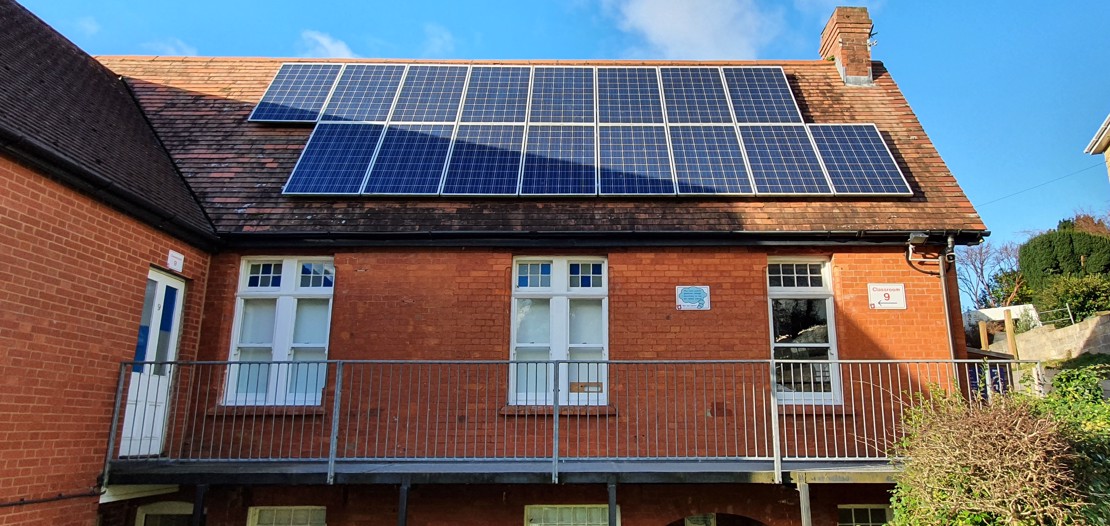
If not now ...
Save money and save the planet.
Some of us in the language teaching industry have been extoling the virtues of online teaching for over 20 years, but it took a pandemic to demonstrate to a wider audience that online teaching really can work. It might not suit everybody, but students who have access to that winning combination of good quality study materials and competent teachers, really can make significant progress online, especially if they’re motivated to do so.
Similarly, a good number of language teaching professionals have been urging course providers to cut back on their carbon footprint for a number of years, but it could be the recent and dramatic increase in the cost of energy that provides the catalyst school managers needed to sit up and pay attention.
While energy is never going to be the most significant item of a language school’s expenditure, energy costs have risen very sharply over the past few months and are predicted to continue to rise, at least in the short-term. In a report published at the end of April, the World Bank predicted that global energy prices could rise by as much as 50% in 2022.
So what better time to review energy expenditure in your school and think about how you could bring those bills down to less eye-watering levels? There’s no shortage of things you could do to achieve this.
We’ll attempt to classify some of the actions you could take according to the costs involved.
- Actions with low or no costs.
- Persuade people to turn off lights, computer screens, air conditioning units, etc., etc. when not in use. A few posters of a burning hot planet strategically placed around the school might help. Feel free to copy or adapt the image above if that helps.
- If you haven’t done so already, replace incandescent or halogen light bulbs with LEDs. They use a fraction of the energy (and last much, much longer).
- If you have water coolers or vending machines, put a timer switch on them. Do you really need to keep these products cool all night?
- Evict the photocopier. Apart from saving energy, you’ll also be saving the cost of the machine itself and its toxic toner. You’ll also be saving on paper. Given that almost every student in your school will have access to a digital device of some kind, there really is no need to send them home with sheaves of paper. Go digital instead.
- Put a maximum and a minimum of your thermostat so you don’t heat or cool your building more than you need to. Of course room temperatures will vary according to the size of the room, number of people in the room, thermal insulation properties, etc, but as a point of reference, recommended temperatures are around 20-21⁰C in the winter and 23-24⁰C in the summer.
- Next time you have to buy a piece of electronic equipment, such as a computer monitor, look at the energy rating. A better rating could save a significant amount of energy over the lifetime of the device.
2. Actions that will require some investment
- Install motion sensors to lighting systems in bathrooms and corridors. With the best will in the world, you’ll never persuade all your students and staff to always switch off all the lights when they leave a room. Motion sensors would do that for you.
- Improve thermal insulation. This could involve putting extra insulating material in the roof cavity of your building and/or installing double glazing if you don’t already have it. Both of these actions will cost money but governments in some countries are offering loans or subsidies to help finance this sort of investment, as part of their broader plans to achieve carbon neutrality. It is at least worth asking the question.
- Install a heat pump. These machines use a small amount of electricity to take low level heat from the air outside and generate significantly more heat through a process of condensation. They typically use 1 kWh of electricity to generate 4KWh of heat, which is around four times more efficient than most other heating systems. Heat pumps are not cheap, but could pay for themselves over 4-5 years and again, there may be subsidies or loans available to help finance the cost.
- Generate your own electricity. Imagine you had a roof covered in solar panels. That would bring the cost of your electricity bills down significantly wouldn’t it? When you’re not using the electricity you generate yourself (e.g. at weekends) you may even be able to sell it to your local electricity provider or to the national grid and generate a little extra income. The cost of solar panels was falling fast before the energy crisis. A sudden increase in demand has meant that prices have stabilised (or even begun to rise again) but again, grants or loans may be available.
The photo below is from a language school in the south west of the UK called Country Cousins.

Country Cousins is both saving money on its energy bills and reducing its carbon footprint.
The school is also an accredited member of Green Standard Schools.
This post was first published on jonathan dykes blog | My perspective on the language teaching business (wordpress.com)






















